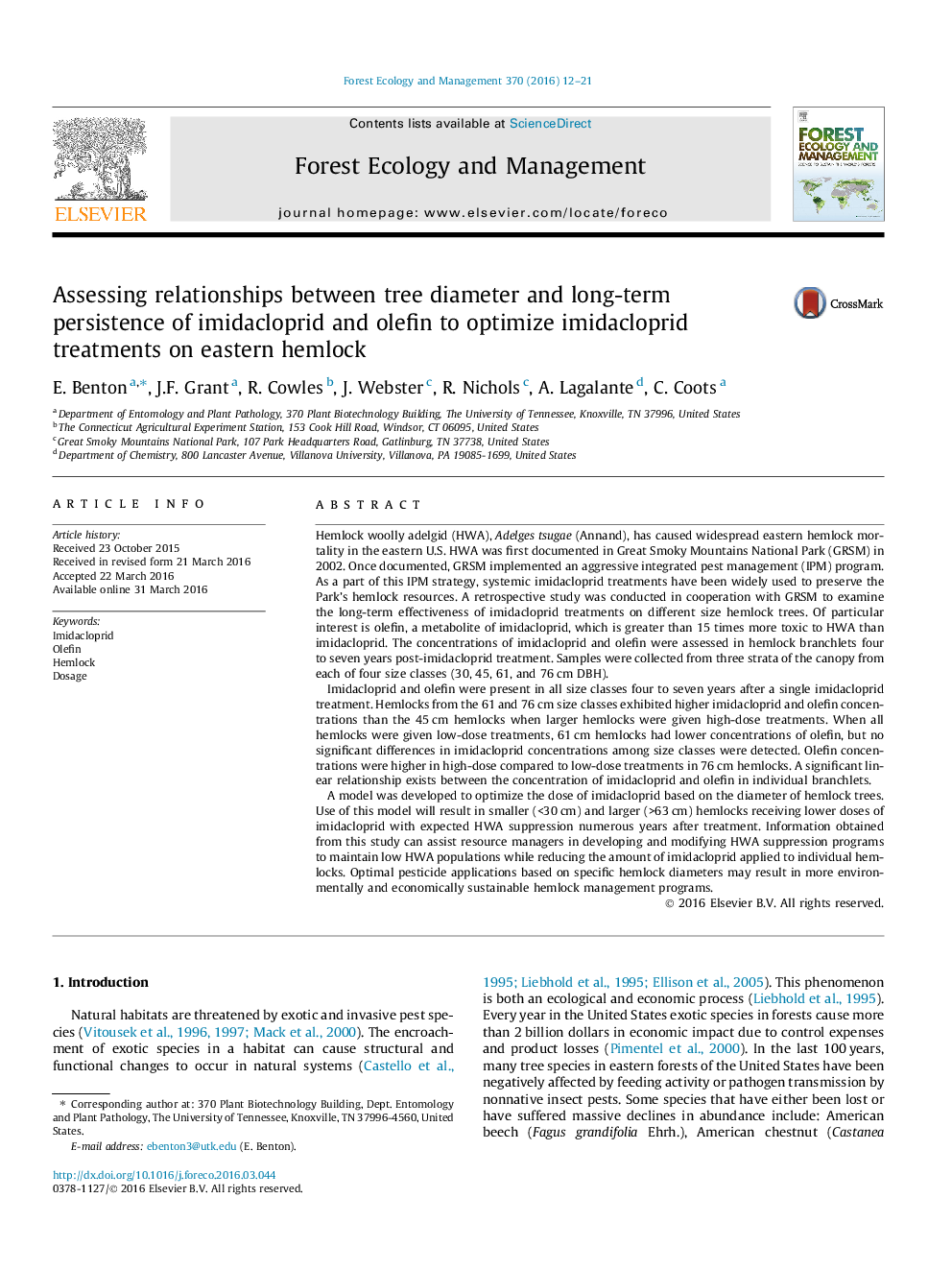| کد مقاله | کد نشریه | سال انتشار | مقاله انگلیسی | نسخه تمام متن |
|---|---|---|---|---|
| 85993 | 159156 | 2016 | 10 صفحه PDF | دانلود رایگان |
• Imidacloprid treatments were assessed in different DBH size hemlocks.
• Imidacloprid concentrations tend to be higher in larger (61 and 76 cm) hemlocks.
• Olefin concentrations were above the LC50 for HWA in larger hemlocks.
• An equation was developed to optimize imidacloprid dose based on hemlock diameter.
• Optimized dose equation will result in less imidacloprid applied to most hemlocks.
Hemlock woolly adelgid (HWA), Adelges tsugae (Annand), has caused widespread eastern hemlock mortality in the eastern U.S. HWA was first documented in Great Smoky Mountains National Park (GRSM) in 2002. Once documented, GRSM implemented an aggressive integrated pest management (IPM) program. As a part of this IPM strategy, systemic imidacloprid treatments have been widely used to preserve the Park’s hemlock resources. A retrospective study was conducted in cooperation with GRSM to examine the long-term effectiveness of imidacloprid treatments on different size hemlock trees. Of particular interest is olefin, a metabolite of imidacloprid, which is greater than 15 times more toxic to HWA than imidacloprid. The concentrations of imidacloprid and olefin were assessed in hemlock branchlets four to seven years post-imidacloprid treatment. Samples were collected from three strata of the canopy from each of four size classes (30, 45, 61, and 76 cm DBH).Imidacloprid and olefin were present in all size classes four to seven years after a single imidacloprid treatment. Hemlocks from the 61 and 76 cm size classes exhibited higher imidacloprid and olefin concentrations than the 45 cm hemlocks when larger hemlocks were given high-dose treatments. When all hemlocks were given low-dose treatments, 61 cm hemlocks had lower concentrations of olefin, but no significant differences in imidacloprid concentrations among size classes were detected. Olefin concentrations were higher in high-dose compared to low-dose treatments in 76 cm hemlocks. A significant linear relationship exists between the concentration of imidacloprid and olefin in individual branchlets.A model was developed to optimize the dose of imidacloprid based on the diameter of hemlock trees. Use of this model will result in smaller (<30 cm) and larger (>63 cm) hemlocks receiving lower doses of imidacloprid with expected HWA suppression numerous years after treatment. Information obtained from this study can assist resource managers in developing and modifying HWA suppression programs to maintain low HWA populations while reducing the amount of imidacloprid applied to individual hemlocks. Optimal pesticide applications based on specific hemlock diameters may result in more environmentally and economically sustainable hemlock management programs.
Journal: Forest Ecology and Management - Volume 370, 15 June 2016, Pages 12–21
